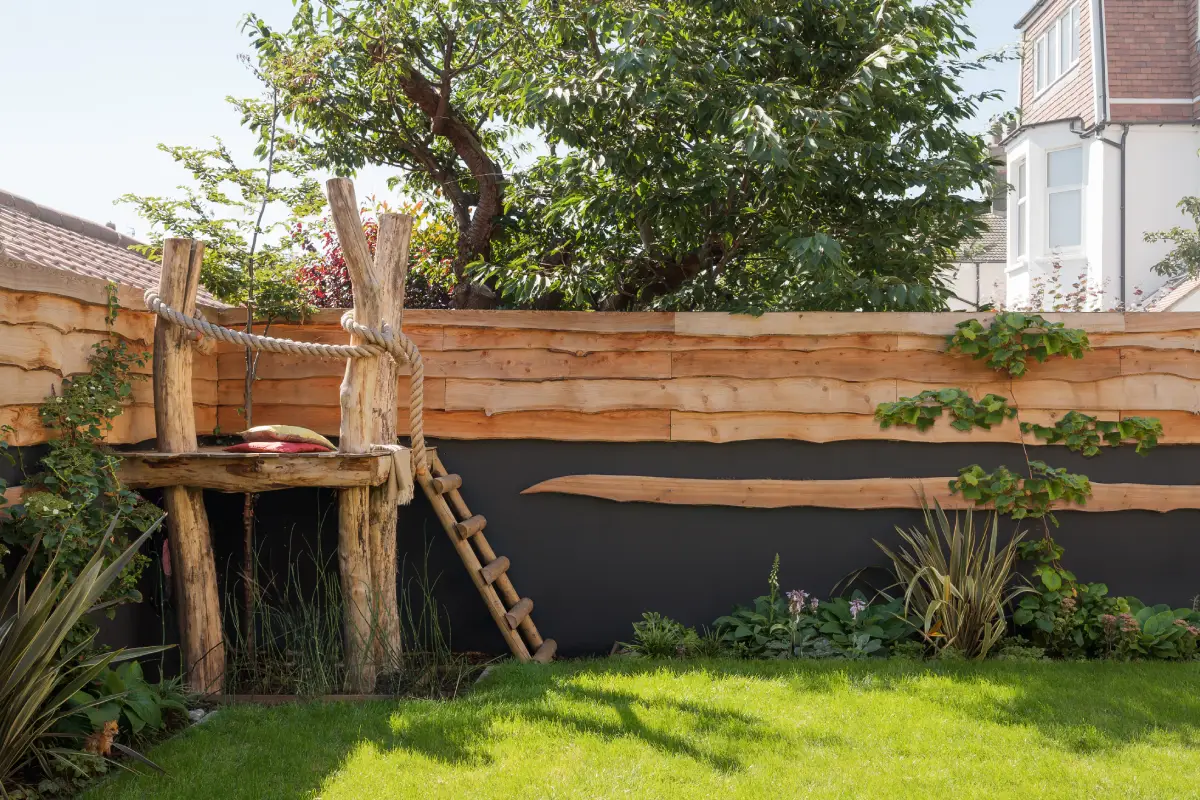For many, the Japanese garden exudes peacefulness and tranquillity. To accomplish this serenity, Japanese gardens follow a set of garden design principles that allow for better flow as well as drawing together several different elements to create a serene space suitable for relaxing and taking in the surroundings. Many furniture and items are associated with the Japanese garden aesthetic; from koi ponds to gravel and stones. However, it’s the unique choices behind the design that make this garden design uniquely transporting.

The most common principles that Japanese gardens follow are; asymmetry, simplicity, space, borrowed scenery, and symbolism. Capturing these styles in the garden design allows for an encompassing vision that compliments the overall flow and provides a space that is relaxing and ultimately fulfilling.
Asymmetry in design
A key aspect of Japanese gardens is their natural aesthetic and vital to this is an asymmetric and irregular feel to the design. Too measured, too precise and things quickly become boring. Japanese gardens are about the beauty in the flawed, crafting something that makes full use of the natural world and works within it to provide a garden design that feels at one with nature instead of attempting to control it. Asymmetry is an important aspect in all forms of Japanese art and an ideal that separates these designs from many others that value symmetry over anything else. The truth is that there are no set rules to Japanese garden design and avoiding a strict template will allow for better designs that allow you to work within the framework of your garden.

Simplicity
Less is more; this is a core principle of most Japanese design and in a pursuit of a zen experience, the absence of a lot of business in the garden design is crucial. This doesn’t mean that your garden design should be dull or lacking but that it should aim to make maximum use of the features and colours that you choose to implement. With this approach, each choice has larger significance and it reduces the chance of overcrowding which can often be the case in modern garden designs. The aim is always to provide a tranquil and distinctly natural space and by limiting the amount of additions you make, you can allow the flow of the garden to speak for itself.

Effective Use of Space
Clever use of space is important in all forms of garden design. In Japanese gardens, the quest is again to establish intent behind the actions of the designer and to further influence how the garden is viewed. By making use of features and the landscape, it is possible to create a space that is framed within the confines of the design. It's also about not being afraid to leave 'empty' spaces in the design and providing open space less clustered with features and furnishings. This use of space allows for a more relaxing environment and allows for the establishment of liminal spaces, which invoke a feeling of transition and modality into the landscape.

Borrowed Scenery
In Japan, the principle of borrowed scenery is centuries old and again refers to the implementation of your surroundings into your design to establish a symbiotic relationship between the two. In this sense, Japanese garden design will make use of external features and views to give focus to a particularly strong focal point off in the distance. For instance in Kyoto, they would make use of mountain ranges or bell towers to generate an extra layer to the design. In this, the designer is given an immense amount of freedom in terms of how they make use of the outer landscape; framing the space to represent what they want to show while minimising the negative aspects that they want to hide.
In typical town gardens found in Brighton, Hove and Sussex popular features to represent would be surrounding neighbouring trees, the skyline, perhaps views of the coast or the Downs. Bringing in that natural element that speaks to those in the garden. If the two spaces are effectively integrated into the design, the two spaces almost become one and you experience what is beyond. This helps to provide a feeling of peace as well as a little magic, which can be effectively captured in the design.
Symbolism in design and approach
At the heart of Japanese design is an approach to subtlety and symbolic gestures in design and features. When designing a Japanese garden, you need to take into account the message that your styling is offering and how you can provide meaning with your features to make the garden greater than the sum of its parts. The reflection off the surface of the pond, the formation of the stones in the gravel paths, the use of borrowed scenery; these can all be used to create an impactful space that creates an effective link with nature and provides a more thoughtful space to relax and unwind.
Crafted into the heart of Japanese design is a commitment to preserving and developing the natural environment and truly maximising the outdoor space we exist in. Through simplistic and charming aesthetics, Japanese-influenced gardens have become a popular and much desired styling for modern gardens. The listed principles, and many others, are at the centre of this and a crucial aspect of establishing a place of relaxation and reflection beyond the purely physical.
If you wish to develop your interest in Japanese gardens further, we are available for a free consultation where we can discuss your ideas and desires and help guide you towards the perfect resolution so you can enjoy the tranquil environment that a Japanese garden provides. For some more inspiration, please view our latest Japanese-influenced garden designs to give you a feel of what you can expect; Japanese Awakening and Oriental Essence.




